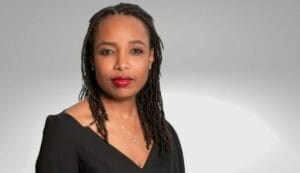Tough and volatile investment environments, pressure on costs and competition for jobs are creating pressure on investment teams to perform better. At the same time investment professionals need to jettison some antiquated approaches to decision making to keep pace with social norms. Cognitive diversity in teams has been hailed as a saviour.
“Cognitive diversity” describes the way individuals receive, process and respond to information or changing circumstances. It describes a way of thinking, not how much an individual knows about something.
For investment teams, in particular, subject-matter and financial expertise is taken as a given, and it is about finding ways of taking different routes to arrive at conclusions and to make decisions. Bringing more than one way of thinking about something helps teams test, challenge or indeed avoid assumptions and biases than could affect the process if everyone thinks the same way.
For investors facing increasingly complex, inter-related and volatile investment markets, diversity of thinking is a tool to make better investment decisions – both what to invest in, and what not to.
Former chair of the C$158 billion ($118 billion) Alberta Investment Management Corporation (AIMCo) Mark Wiseman says cognitive diversity should reduce investment mistakes.
Wiseman says investors are typically prone to making two types of errors: Type One errors, or “errors of commission” – that is, investing in things that perform poorly; and Type Two errors, or “errors of omission” – that is, actively deciding to not invest in something that goes on to perform well.
Wiseman, who is also former president and CEO of the (now) $437 billion Canada Pension Plan Investment Board (CPPIB) and former global head of active equities at Blackrock, says investors generally are good at recognising and adjusting for Type One errors but are significantly less good at recognising and adjusting for Type Two errors. He contends that cognitive diversity and diversity of thinking on investment teams has the potential to mitigate errors by opening the team’s thinking to the possibility of novel or unusual ideas.
“To me, investing is ultimately about reducing both Type One and Type Two errors,” Wiseman says. “The way you do it has to be that having a greater degree of cognitive diversity… should lead to a reduction in both Type One and Type Two errors.”
“Having a greater degree of cognitive diversity…should lead to a reduction in both Type One and Type Two errors.”
Either type of error can occur when the inputs into a process miss important things, are based on assumptions that are accepted by a whole team and not challenged, or where the route to making a decision is too narrow.
Wiseman, who stepped down from AIMCo at the end of 2023, says that compared to boards and investment teams of the past, which tended to be homogenously white and male, “you’re more likely to get diversity of thought when you have teams that have other forms of diversity, be they gender diversity, ethnic diversity, geographic diversity, et cetera”.
“But it’s not a given,” Wiseman says, and it usually doesn’t get you far enough.
Unhelpful proxies
Chief executive of the £40.3 billion ($51.1 billion) Border to Coast Pensions Partnership, Rachel Elwell, says gender, background or physical characteristics sometimes are used as proxies for cognitive diversity – men are assumed to think differently always and inevitably from women, for example – but “if you all went to the same school and the same university, you’re probably not, really diverse”, Elwell says.
“Being a female leader in financial services, something that you grow up being aware of is I think we sometimes use physical characteristics to try to second guess the cognitive side,” she says.
That’s not to say that diversity based on gender, ethnicity and other factors is not important – it is, critically, for a range of well-established reasons. But it also means you cannot look at a team and necessarily use visual cues to determine its inherent cognitive diversity.
CalPERS’ chief diversity, equity and inclusion officer Marlene Timberlake D’Adamo, says every organisation is looking to hire the best people they can find to strengthen teams and improve organisational performance. Cognitive diversity is a lens that can be used to support that.
“When we think about cognitive diversity, we think about folks that actually think a little bit differently, or maybe even a lot different,” Timberlake D’Adamo says.
“When we think about cognitive diversity, we think about folks that actually think a little bit differently, or maybe even a lot different.”
“It’s not specifically about subgroups of people. I think a lot of times when we think about DEI or maybe even, say, the early versions of DEI, it’s really thinking about subgroups, like parts of the whole.
“What I like is that this definition is really focused on the people part, because it really is about people, and it’s not about specific, identifiable subgroups.”
CFA Institute global senior head of diversity, equity and inclusion Sarah Maynard says cognitive diversity tends to be “a bit of a huge bucket into which people put multiple different types of diversity”.
“And it’s not altogether wrong, but it’s not altogether, right,” she says. “Comparisons within groups or between groups, if they’re done on that, frankly, sort of visual [basis] – OK, I’ve got one of those, one of those, one of those – it’s going to be way too superficial,” Maynard says.
“Ultimately, you’re trying to get to understanding the humans that you’ve employed, in many diverse ways, because that makes for better management.”
Maynard says not all organisations will harness benefits of cognitive diversity, perhaps because they simply do not perceive the benefits, or they don’t have the resources to do it effectively.
“In a majority of cases, I would say it’s [because of] not necessarily really understanding more deeply as to what we might mean by that cognitive diversity, certainly from a neuroscience point of view,” Maynard says.
Neuroscience and interacting with the physical world
From a neuroscience perspective, we’re all wired to process information and to interact with the physical world differently. Stanford University neuroscientist and author David Eagleman says how individuals respond to challenges, solve problems and make decisions is shaped by their “life trajectory”, and we all have different trajectories.
“We all believe our internal models are the truth, which is to say, whatever your thin trajectory of space and time has been, your brain has constructed a model of how the world works,” Eagleman says. “Despite the fact that the internal models are always quite poor, we have this illusion of explanatory depth, which is we think we know everything in a much deeper way than we do.”
“We have this illusion of explanatory depth, which is we think we know everything in a much deeper way than we do.”
Eagleman says there’s a risk for investment professionals that without being challenged on established ideas and without thinking carefully about how they reach conclusions, “assuming you don’t screw up an investment totally, and you make some amount, then you think you’re really good”.
Eagleman, who also hosts the Inner Cosmos podcast, which explores the way the human brain interacts with the physical world, says it can be beneficial to expand the cognitive capabilities of an investment team to include, for example, individuals schooled in the scientific method. 
“Having subject matter experts is one thing,” Eagleman says, but “from an investment point of view, I’mbecoming good at just speaking the language of science”.
He says that this means being trained to challenge conventional wisdom, and to ask the right questions about what’s being placed in front of you.
“It means when the founders [of a potential investee company] show you some data, just being facile with the questions: OK, did you have a control group? How did you do the statistics here? You know, is it statistically significant in the first place?”
Joining the dots
Cognitive diversity does not automatically arise in a team just because it has a range of subject-matter experts. And sometimes it’s a diversity of cognitive skills that allows specific subject-matter expertise to be linked together in new and productive ways.
PRI chief executive David Atkin says he himself is a case study in diversity of thinking – he’s an historian by education and qualification and holds a master’s degree in history.
“You would not want me making investment decisions for you,” Atkin says. “But I’ve been running pension funds [and as] an historian one of the things you do is look across various areas of domain expertise and join the dots and create, analyse.
“I was analysing why do societies change? What are the factors that see change occur? You have to be across a whole range of areas to be able to draw that all together.
“I just use my own experience: I come into rooms where I have lots of different people who are just super smart – super, super smart, and super deep in their expertise. But they’ll think like this [narrowly and deeply]. And I’ll think like that [broadly].”
Atkin says the investment world is throwing up new challenges for investors and creating a new set of complexities that asset owners “need to join the dots on”.
“There’s a challenge for the whole industry because there’s a capability piece that needs to be built out for, which is beginning to happen,” he says. “And that requires different skill sets, different expertise, different cognitive abilities, to better problem-solve and join the dots of these connected issues.”
“And that requires different skill sets, different expertise,different cognitive abilities, to better problem-solve and join the dots of these connected issues.”
Despite the neuroscience element to cognitive diversity, it is not, in practice, an exact science. And it should not be pursued at the expense of creating a high-functioning team focused on serving the interests of beneficiaries as well as possible.
An evolutionary process
Willis Tower Watson Thinking Ahead Institute co-head Marissa Hall says cognitive diversity in an investment team can’t easily be achieved in a single, big-bang moment, it has to “happen in a real-world context”.
“There’s diversity on paper, which can be well, if I had 100 people I would probably optimise it – if all those people were aligned with my goals, caveat. But the real context is I’ve got three spaces to fill, and I need to think about it as incremental, not necessarily transformational.”
Hall says it is much harder now than it used to be for organisations to ignore the benefits of cognitive diversity and say that it’s too difficult, or because the “right” people can’t be found.
“You still have to show best endeavours,” Hall says. “Are you going into schools? Are you working with targeted recruitment firms? Are you maybe thinking about your entrance criteria, so you’re not just looking for graduates, you’re looking for people from different backgrounds, all of that sort of stuff?”
Boarder to Coast’s Elwell says cognitive diversity in organisations is “something that’s really close to my heart”.
Elwell says that “particularly in financial services, there are a lot of opportunities for people with neurodiverse characteristics”. She says her intention is to “create an environment where all colleagues can thrive and be themselves”.
“As a leader understanding the different challenges people face helps you to really think about how to create that environment where you can get the best out of everybody, and that they can work together and they understand the differences,” she says. “That’s something I’ve been really thoughtful about.”
Elwell says Border to Coast has processes formally built into its recruitment and induction that “try to bring that to life in different ways”.
“At the executive level, when I’m recruiting into my executive team, when we get towards the end of the process an executive coach gets involved to do some analysis, run a coaching session with the [final] candidates,” she says. “They’re not going to share personal things that happened in those conversations. But [it is] to get an indication from that coach about how those people might add to the team dynamic at an executive level, to set the expectation that this is something that’s important.
“Then for me to have a think about how do I run that team, and how do I get the best out of the individual, and the individual’s contribution to the team, is formally part of it.
“That is very much looking at cognitive diversity because you’re using psychometrics and actual time with an executive coach to explore what those mean.”
“That is very much looking at cognitive diversity because you’re using psychometrics and actual time with an executive coach to explore what those mean, not just using the output of a questionnaire.
“But that is a lot of investment, both for candidates and for us, because obviously there’s a cost associated with that, and time.”
STRENGTH IN DIVERSITY
Eva Halvarsson, chief executive officer of Swedish buffer fund AP2, says exposing individuals to other people’s ways of thinking about and solving problems strengthens a team overall, by demonstrating there’s more than one way to make decisions and no single approach is automatically always the right one.
She says the challenge for asset owners is to create an environment where diverse thinking is recognised and valued. This means organisational leaders are being challenged to “really try to get to know your staff or your colleagues, and to talk, finding ways to address your [different] reaction in a way that is not threatening”.
“And that’s the reason it’s very good to go away for an offsite to do some Myers-Briggs training, or whatever, to find common words so it’s not challenging,” Halvarsson says.

The SEK425 billion ($40.7 billion) organisation is currently restructuring its investment teams and some team members will be exposed to ways of thinking and investing that are new to them, or different from how they’ve done it previously. For example, its head of equities will also work with a team of quantitative investment managers and analysts.
“He has not before worked with quants, only had them as colleagues in a different team,” Halvarsson says. “On the contrary, he has often been challenging their investment style. And now he will be heading those guys and women. I am sure that both he and the team will learn a lot from each other and find new ways to work to make good use of the all the different skills that exist in the new team.”
Asset owners rarely, if ever, have the luxury of creating a new investment team from scratch and setting recruitment parameters that incorporate cognitive diversity factors from day one. But they can still benefit from accommodating teams of individuals who do think differently from each other.
Halvarsson says her own preferred approach to making decisions is to take her time and to be considered.
“From that perspective, or that example, I can say, well, you know me,” she says.
“So you have to find a common language to address these issues. I think it’s the way forward.”
A critical characteristic
AIMCo’s former chair Wiseman says not all investment teams have true diversity of thought, but it’s a really critical characteristic.
“Investing is ultimately about predicting the future, which, in spite of all the work we have on AI and quant analysis, is exceptionally hard to do,” Wiseman says. “But what we know is that the future outcome is going to be multivariate in terms of what causes the outcome.”
It that’s true, then it stands to reason that cognitive inputs to investment decision-making should also be multivariate.
And PRI’s Atkin says there is a real need for different skills sets because of the new and evolving challenges of investing.
From his current vantage point, Atkins says he’s seeing how institutional investors are responding to being asked to address increasingly complex issues, such as sustainability.
“We are reimagining the way in which we think about the balance sheet, and the way in which we think about value,” Atkin says. “And we’ve understood more and more that there are these externalities that are hitting the balance sheet, either now or in the future, which require different ways of understanding the problem and different ways of diagnosing risk and opportunity.
“When it comes to the issue around, for example, climate change and investment teams seeking to achieve net zero targets, there are a lot of challenges. There’s information challenges, but there’s a whole lot of technical challenges that are in front of teams, because investment teams are being asked to solve problems that they have not been trained for.”
CFA Institute’s Maynard says an asset owner that “does the deeper work will, I think, be able to generate a different kind of organisation, different kind of team interactions”.
“[Who] does the deeper work will, I think, be able to generate a different kind of organisation, different kind of team interactions.”
“There is a wealth of experience and understanding to come from that. But of course…it’s tough work. It’s not simple and straightforward. I definitely think there’s a huge opportunity there, and there are some very encouraging signs. But it’s certainly not going to be industry-wide.”

Maynard says one thing that can be “super helpful” to building cognitively diverse teams is to ensure that “when it comes to interviewing, selecting, you have a really consistent approach”.
“You don’t just say somebody gave a great answer to this question,” she says.
“You do a numerical score, there’s a degree of anonymizing of CVs and the like – there are things that can help with debiasing the process – and also being much clearer about if you want to appoint somebody, why you’ve done so.
“Things even as simple as, whether you’re doing an internal promotion or you’re recruiting from outside, you ask all the candidates the same questions. It would seem to be blindingly obvious that would happen, but you’d be amazed how few organizations have that as an accepted practice.”
A means to an end
Thinking Ahead Institute’s Hall says diversity, in any form, isn’t an end in itself, but rather, is a means to an end.
“I don’t think organisations think of that as the end goal,” she says. “That wouldn’t make any sense. The end goal is how do we invest and deliver outcomes for our end savers; or how do we achieve the goals of the organisation. And so diversity, just like culture, just like good governance, just like technology, these are the enablers to be able to achieve that.”
Hall says achieving cognitive diversity will generally always be a work in progress.
“You will always be on a journey, you will always be on a path to doing it, you will always tweak it, just like how you always tweak your investment portfolio – you never keep the same strategy in changing conditions,” she says.
“You will always be on a journey, you will always be on a path to doing it, you will always tweak it, just like how you always tweak your investment portfolio”
“Making it aligned with the investment portfolio narrative, and the sustainability journey that we’ve all been on, why would we treat our human capital narrative any differently?
“If we almost look beyond diversity, and it’s like we are trying to find the best humans, regardless of where they come from, regardless of their background, regardless of what they look like, and we have a mindset that talent can come from anywhere, then you’re more on the right track.”
CalPERS’ Timberlake D’Adamo says managers and people who lead teams within the business need to see diversity of thinking as a strength of a team, not as a challenge to them as a leader, nor as insubordination on the part of the individual.
“It really is trying to make space for those people…to do what they do, to think the way that they think, and not feel like they have to tamp that down, or not be able to raise their hand and say, hey, I’ve got a different take on this, or, you know, I don’t really see it that way,” Timberlake D’Adamo says.
 “I always value the people that have the ability to do that. Why? Because it takes a lot of courage to be able, in a roomful of people who are nodding their heads, to say, I see it a little bit different; or gee, I’m just not quite there yet.
“I always value the people that have the ability to do that. Why? Because it takes a lot of courage to be able, in a roomful of people who are nodding their heads, to say, I see it a little bit different; or gee, I’m just not quite there yet.
“The natural inclination of some people is to think of that as like a challenge, or threat or insubordination, or somebody who’s not just going along with the program and throwing a wrench in it.
“It takes a lot in terms of checking ourselves, to be able to say, okay, you know, this person has a different take, let’s hear it.”
Timberlake D’Adamo says the $483.7 billion CalPERS doesn’t formally assess individuals to try to determine or identify their cognitive capabilities but she says the organisation spends a lot of time considering the sorts of individuals it needs to bring in.
“There’s no sit-down test where you’re checking boxes or doing things like that,” Timberlake D’Adamo says.
“Like a lot of things when trying to find, call it, that square peg in the round hole…a lot of times this type of work around people is, I was going to say hard but I don’t mean hard in terms of difficult. It requires you to be thoughtful and intentional, and it’s step-by-step.
“I was going to say [it’s] hard, but I don’t mean hard in terms of difficult. It requires you to be thoughtful and intentional, and it’s step-by-step.”
“It’s on an individual-by-individual basis. It is assessing what you have, and then figuring out what you’re missing and then trying to find people that bring that other element to what it is that you think that you’re missing.
“But I want to be clear in saying that when you think about what you have, you actually have to do that very thoughtfully. You have to really have thought this through because if you just knee-jerk say what you think you have, and you’ve not interrogated your own views, perspectives, results, data measures, then you might not end up with what you think you need.”




 “I always value the people that have the ability to do that. Why? Because it takes a lot of courage to be able, in a roomful of people who are nodding their heads, to say, I see it a little bit different; or gee, I’m just not quite there yet.
“I always value the people that have the ability to do that. Why? Because it takes a lot of courage to be able, in a roomful of people who are nodding their heads, to say, I see it a little bit different; or gee, I’m just not quite there yet.